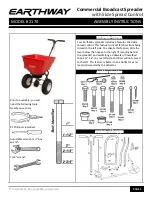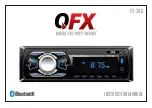
Installation Guide
Wiegand Readers
CSI Readers
25
Wiegand Readers
The group of readers capable of producing Wiegand format output include most tech-
nologies of mag-stripe, proximity, biological, voice, etc., as well as the Wiegand tech-
nology reader from Sensor Engineering. Data from the Wiegand reader (or other device
producing Wiegand output) is presented through a two-wire interface plus a ground
reference. The two-signal conductors provide Data-0 and Data-1 lines that typically
provide a TTL-level active low pulse with some devices using an open collector output.
A pulse is generated on the respective line (logic-0 or logic-1) for each bit in the 26-
/32-/66-bit pattern. The pulses must be a minimum of 50 milliseconds long.
CSI provides several devices using Wiegand format. They include insertion type key
readers, insertion type card readers, swipe type card readers, and turnstile type card
readers. Though they are not readers, the Wiegand format KEYPADS are also docu-
mented in this section.
Wiegand Data Format
CSI-provided devices may use any of the following Wiegand data formats :
✦
26-bit Wiegand
✦
32-bit Wiegand
✦
66-bit Wiegand
(66-bit Wiegand support requires I/NET 2000 version 2.x or later,
and DPU firmware version 2.20 or later)
The 26-bit Wiegand format is a standard used by many reader/card manufacturers. This
bit pattern is called the 2601 format by Sensor Engineering and is available to the user
directly from Sensor Engineering.
Cards with the CSI 32-bit format are available only from CSI. The limited access to this
format, as well as the CSI-controlled site number encoding, provides an additional level
of security to the user. The 32 data bits are divided into three fields defined as a Sensor
Control Bits field of seven bits, Site (Facility) field of eight bits, and a User Number (PIN)
field of 15 bits.
The Sensor Control Bits field is factory set for CSI proprietary control of cards and keys
in CSI readers. Other 32-bit cards and keys cannot be used with CSI readers using 32-bit
Wiegand format, and CSI 32-bit format cards and keys cannot be used in other manu-
facturers’ readers.
The second eight bits (bits 9–16) are the Site (Facility) field. They define the card for a
specific site (facility). The most significant bit for this field is bit 9.
The next fifteen bits (bits 17–31) are the User Number field, allowing a number from 0
to 32,767. The most significant bit in this field is bit 17.
Содержание CARDPIN1
Страница 5: ...Installation Guide CSI Readers v Specifications 45 Index 49...
Страница 58: ......
Страница 59: ......
















































